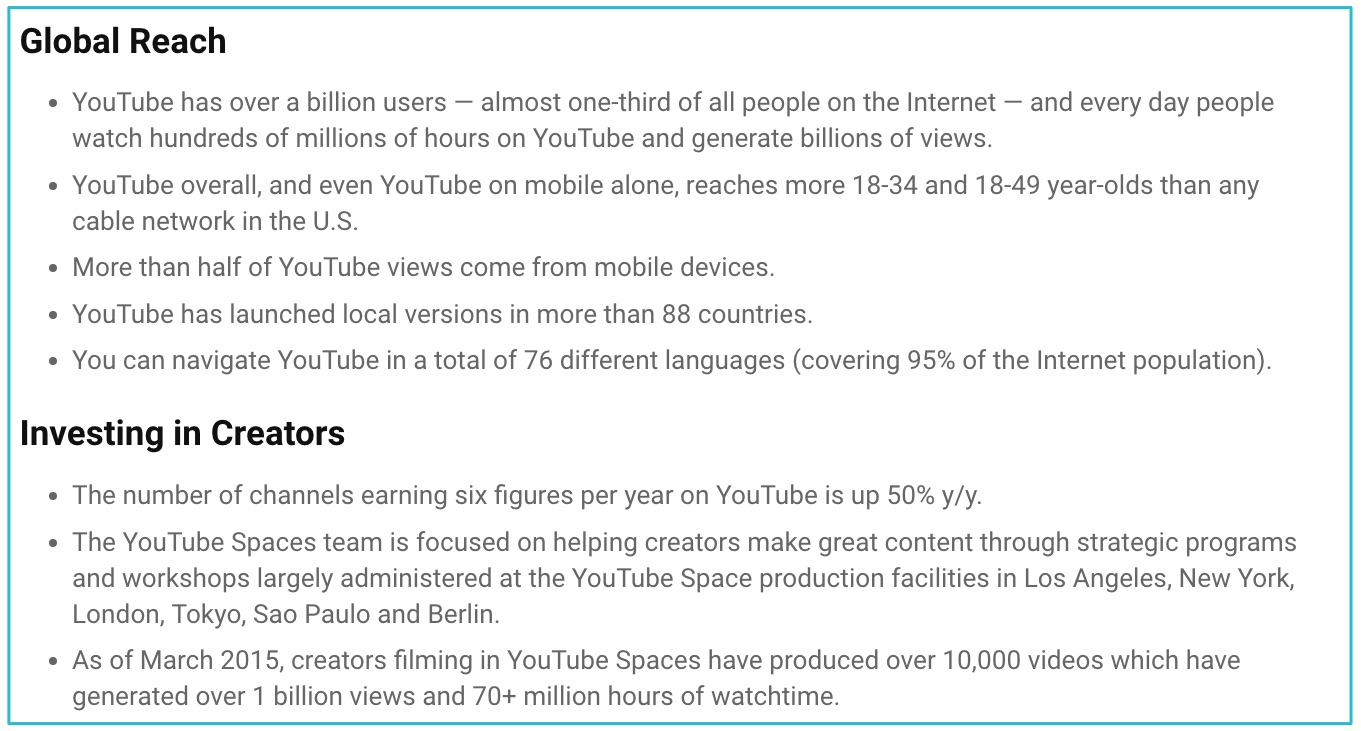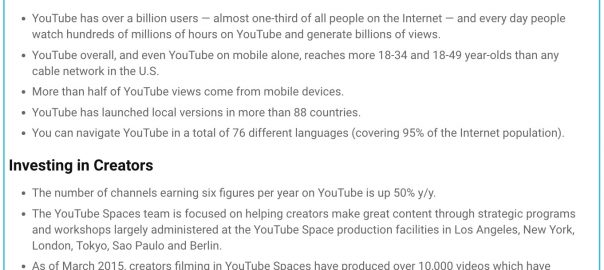We all know that online video and mobile usage is surging at levels we’ve never seen before. While there are more than a billion active websites and blogs on the internet today, in the coming months and years, online video is going to continue to dominate and the numbers only continue to get more impressive.
The Future of Online Video and Where We are Headed
While this may not be that surprising at its core, what will be surprising is those brands and businesses who are left behind that aren’t already making the transaction. To take a closer and more detailed look into the coming years and how much of an impact online video will actually be, we need to look no further than Cisco’s whitepaper on visual networking, which highlighted the following.
- Global IP traffic will increase nearly threefold over the next 5 years and will have increased nearly 100-fold from 2005 to 2020. Overall, IP traffic will grow at a compound annual growth rate (CAGR) of 22 percent from 2015 to 2020.
- Smartphone traffic will exceed PC traffic by 2020. In 2015, PCs accounted for 53 percent of total IP traffic, but by 2020 PCs will account for only 29 percent of traffic. Smartphones will account for 30 percent of total IP traffic in 2020, up from 8 percent in 2015. PC-originated traffic will grow at a CAGR of 8 percent, while TVs, tablets, smartphones, and machine-to-machine (M2M) modules will have traffic growth rates of 17 percent, 39 percent, 58 percent, and 44 percent, respectively.
- Traffic from wireless and mobile devices will account for two-thirds of total IP traffic by 2020. By 2020, wired devices will account for 34 percent of IP traffic, while Wi-Fi and mobile devices will account for 66 percent of IP traffic. In 2015, wired devices accounted for the majority of IP traffic at 52 percent.
- It would take an individual more than 5 million years to watch the amount of video that will cross global IP networks each month in 2020. Every second, nearly a million minutes of video content will cross the network by 2020.
- Globally, IP video traffic will be 82 percent of all consumer Internet traffic by 2020, up from 70 percent in 2015. Global IP video traffic will grow threefold from 2015 to 2020, a CAGR of 26 percent. Internet video traffic will grow fourfold from 2015 to 2020, a CAGR of 31 percent.
- Internet video surveillance traffic nearly doubled in 2015, from 272 petabytes (PB) per month at the end of 2014 to 516 PB per month in 2015. Internet video surveillance traffic will increase tenfold between 2015 and 2020. Globally, 3.9 percent of all Internet video traffic will be due to video surveillance in 2020, up from 1.5 percent in 2015.
- Virtual reality traffic quadrupled in 2015, from 4.2 PB per month in 2014 to 17.9 PB per month in 2015. Globally, virtual reality traffic will increase 61-fold between 2015 and 2020, a CAGR of 127 percent.
- Internet video to TV grew 50 percent in 2015. Internet video to TV will continue to grow at a rapid pace, increasing 3.6-fold by 2020. Internet video-to-TV traffic will be 26 percent of consumer Internet video traffic by 2020, up from 24 percent in 2015.
- Consumer VoD traffic will nearly double by 2020. Ultra-high-definition (UHD) will be 20.7 percent of IP video-on-demand (VoD) traffic in 2020, up from 1.6 percent in 2015.
- Content delivery network (CDN) traffic will carry nearly two-thirds of all internet video traffic by 2020. By 2020, 64 percent of all Internet video traffic will cross CDNs, up from 45 percent in 2015.
As more mobile devices and advanced technology continue to make its way around the world to smaller and lesser advanced countries, it’s easy to see how quickly the rise of mobile and video will scale in the coming months and years. With this also in mind, it leaves huge business opportunities for those who are willing to invest the time and effort to create video focused solutions and advertising platforms. This is something YouTube, Facebook and Snapchat have already mastered, while many other brands and businesses continue to adapt along the way.
Even just looking at the recent user numbers and areas of focus on YouTube, we can see a massive shift from traditional text content to online video and user generated content. Based on these 2017 YouTube video stats reports, we can see YouTube is focusing more time and effort on investing in their creators and new content, while also building monetization plays to compete against traditional cable and television networks (via YouTube Red and YouTube TV).

The Next Wave of Video and How Businesses and Brands Will React
Most businesses and brands have already mastered the art of text content creation and using social media to further promote what they have to offer. However, many of them are still sitting on the sidelines when it comes to online video.
It’s also not just a matter of when and where to place video content online, it’s also a matter of how to best create. While solutions like YouTube are great for simply recording and placing raw footage online, it might not be the best situation for businesses or brands looking to market their services. Instead, they will often need a more customized approach.
Karsten Boehrs, CEO & Co-Owner of simpleshow, the parent company of the online video-maker tool mysimpleshow.com, says “Having a good explanation, a great story, and strong visuals are key to get your message across to your customers. Therefore videos are becoming more and more important to businesses. While it’s important to keep the message of your video on point, it’s important to make sure it provides real value to your audience and also brings a return on investment back to the business.”
To further back up these recent findings and reports in online video, the following infographic was already created to provide a visual representation of the massive growth we are seeing today.
![The Future is Online Video, and Here are the Stats to Prove It [Infographic]](https://www.onlinesalesguidetip.com/wp-content/uploads/2017/06/The-Future-is-Online-Video-and-Here-are-the-Stats-to-Prove-It-Infographic.png)
While the growth numbers are clearly in place, we can also refer to BBC News and one of their recent articles on how video is swamping the internet, and it looks like there no end in site. A few data points from their article include:
- Video will account for 80% of all internet traffic by 2019, up from 64% in 2014, says technology giant Cisco.
- Facebook founder Mark Zuckerberg says that 90% of the social network’s content will be video-based by 2018.
- And network company Ericsson thinks mobile video traffic will rocket 55% a year between now and 2020.
And if you think video is just about ‘online video’ as we know it today… you are wrong. While the concept of virtual reality and video is already here, it just isn’t as mainstream to the rest of the world yet — however, the article does go on to state “Mark Zuckerberg confirmed that there have already been one million hours of 360 video consumed in [Samsung’s] Gear VR.“. As you can imagine, once more of these devices get in the hands of users around the world, video will become a much larger part of our daily lives than ever originally imagined.
With all of this data and research on where the future is headed with online video, it’s no longer a question of when and where your business will need to adapt — it’s a matter of how. The demand and driving forces behind online video are already here, now it’s time to take action before your competition leaves you in the dust.
Digital & Social Articles on Business 2 Community(45)







